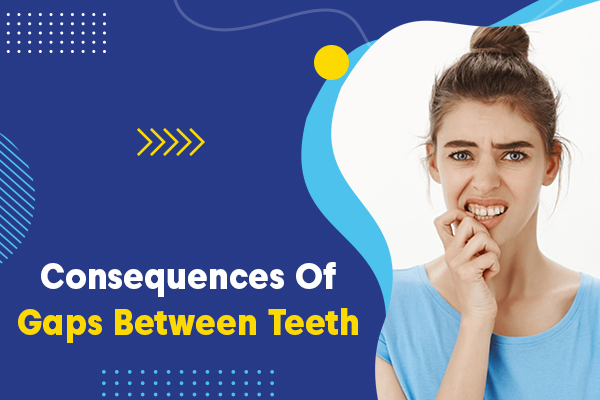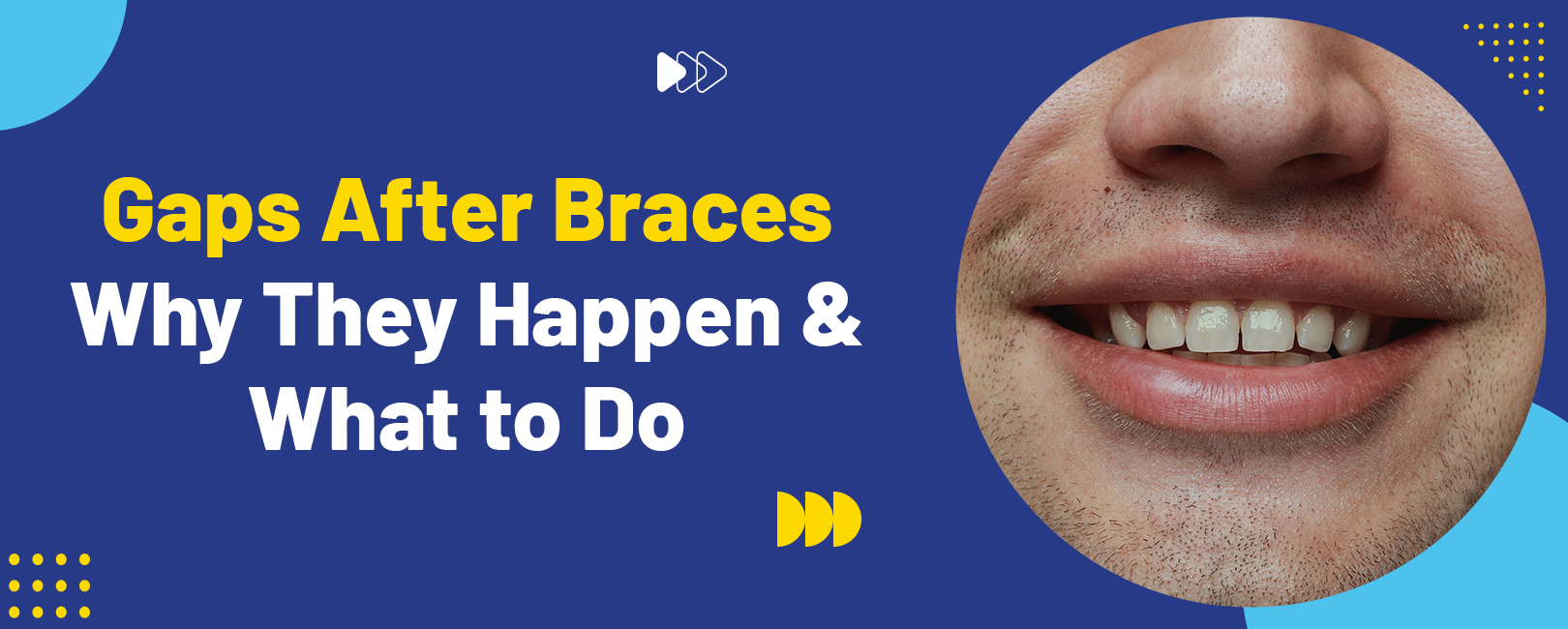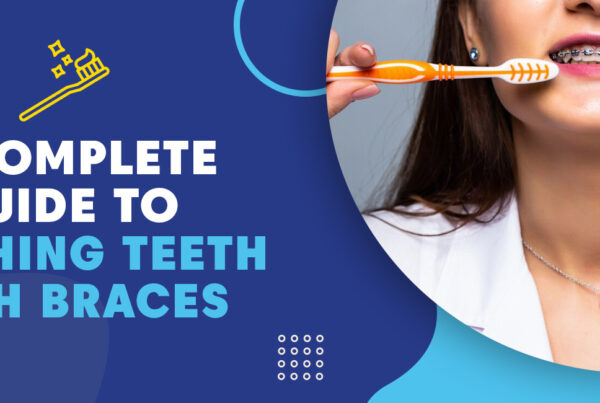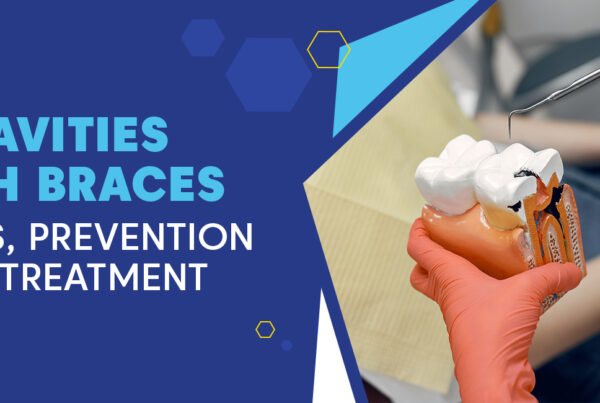Do you remember the feeling of excitement when your braces finally came off? Your smile was perfectly aligned, and you felt like a brand-new person. But what happens when that euphoria fades, and you start noticing gaps between your teeth? It can be disheartening and leave you questioning the effectiveness of the braces.
If you’ve experienced this, don’t worry, you’re not alone. Many people encounter gaps after braces, and it can happen for a variety of reasons. In this comprehensive blog, we’ll dive deep into the topic, exploring why these gaps between teeth occur and, most importantly, what you can do to address them.
Cause Of Post-Braces Gaps
The development of gaps in teeth after braces removal can occur for various reasons, but the team at Orthodontic Experts is here to provide insight and solutions. It can be can be attributed to various factors such as:
Retention Phase Challenges:
The retention phase is a crucial part of orthodontic treatment. It involves wearing retainers to help maintain the alignment achieved during the treatment. However, retainers may not be as effective at holding teeth in their final positions, potentially allowing for minor shifts that can lead to the appearance of small gaps.
Natural Tooth Movement:
Even without braces, teeth have a tendency to shift naturally over time. This movement can occur due to various factors, including aging, changes in bite, and the everyday pressure applied during chewing. These natural shifts can contribute to the development of gaps.
Elastic Ligaments:
The ligaments connecting teeth to the jawbone are elastic by nature. They continue to exert pressure on the teeth, and this pressure can sometimes push teeth apart, leading to gaps.
Genetics:
An individual’s genetic makeup can significantly influence the size and arrangement of their teeth. Genetics can play a role in making someone more prone to developing gaps, both before and after orthodontic treatment.
Orthodontic Experts understand that minor gaps that develop after braces removal are often considered a normal part of the post-treatment process. As part of our commitment to your oral health, our expert team provides guidance on retainer usage to help maintain the results achieved during your orthodontic treatment.
Incomplete Treatment:
Sometimes, orthodontic treatment may not fully address the underlying issues that caused misalignment. If the initial treatment was incomplete or if there were underlying concerns not fully resolved, this can result in recurring gaps.
Consequences of Gaps Between Teeth
When a gap forms between your teeth after braces, it can be a cause for concern. Understanding what happens when a gap forms can help you address the issue effectively. Here’s what you need to know:

- Dental Misalignment: Gaps can lead to a misalignment of the teeth, affecting your bite and potentially causing discomfort or difficulty chewing.
- Food Accumulation: Food particles can get trapped in the gap, leading to a higher risk of plaque buildup, cavities, and gum disease.
- Speech Impairment: In some cases, larger gaps can impact speech clarity and pronunciation, causing speech impairments.
- Self-esteem and Confidence: Gaps between teeth can have a significant impact on self-esteem and confidence, potentially affecting social interactions and overall well-being.
When Do Your Teeth Stop Shifting After Braces?
Teeth can continue to shift throughout one’s lifetime, even after braces. The immediate period following braces removal, known as the “retention phase,” is crucial for preventing significant shifts. During this time, orthodontic patients are typically advised to wear retainers to help maintain the alignment achieved during their treatment.
The retention phase typically lasts for several months or even longer, depending on the individual’s orthodontic needs. The goal is to give the bone and ligaments surrounding the teeth enough time to adapt to their new positions. Over time, the need for wearing retainers may decrease, and patients may transition to wearing them only at night.
However, it’s essential to recognize that while the risk of significant shifts decreases over time, teeth can still experience gradual changes as a person ages. Factors such as natural aging, changes in bite, and other oral habits can influence tooth movement.
To ensure that your teeth remain in their desired alignment, it’s advisable to follow the guidance of your orthodontist regarding retainer usage and attend regular follow-up appointments to monitor your progress. This will help address any concerns promptly and ensure the longevity of your orthodontic results.
Orthodontic Experts is dedicated to not only providing exceptional orthodontic treatment but also offering comprehensive care and solutions to maintain the results of your treatment.
Gaps in Front Teeth After Braces – Why They Happen:
It is common for individuals who have recently had their braces removed to notice small gaps between their front teeth. While this phenomenon can be concerning, there are several reasons why it might happen.

Natural tooth movement: Over time, teeth can shift slightly, much like how hair grows or the body changes with age. This movement can cause gaps between teeth to form. Additionally, if you had braces for an extended period, it is possible that your teeth have shifted since the time when you first got them.
It is essential to note that these gaps are usually temporary and can be addressed by your orthodontist. If you notice any gaps or changes in your teeth after getting your braces removed, it is best to consult your orthodontist as soon as possible to determine the cause and address any concerns.
limitations in orthodontic treatment: Braces work by applying pressure to the teeth to shift them into their proper positions. However, in some cases, it may be challenging to close gaps between teeth entirely, especially if the gaps are significant or due to the positioning of the teeth and jaw. In such cases, orthodontists may need to adjust the treatment plan or consider additional procedures to help close the gaps.
Factors That Can Create Spaces Between Front Teeth:
Spaces between the front teeth can be the result of various factors, each of which has its own set of causes.
Genetics: This is one of the main contributors to gaps between teeth. The way a person’s teeth are positioned is often determined by their genes, which can play a significant role in the occurrence of spaces between the teeth.
Oral habits: These can also cause gaps between the front teeth. Some of these habits include thumb-sucking and pacifier use for extended periods, which can cause teeth to shift apart. Additionally, tongue thrusting, where the tongue pushes against the front teeth while swallowing, can also lead to spacing between the teeth.
Dental conditions or injuries: These can also create spaces between the front teeth. Gum disease, for instance, can cause the gums to recede, leading to the formation of gaps between the teeth. Trauma to the teeth, such as a fall or blow to the mouth, can also cause the teeth to shift apart.
Embrace a Gap-Free Smile: Expert Solutions at Orthodontic Experts
Don’t let gaps between your teeth after braces hold you back from flaunting a confident, beautiful smile. At Orthodontic Experts, we specialize in addressing these concerns, providing braces for gap teeth and expert guidance on teeth after braces.

Gaps between teeth are not uncommon after orthodontic treatment, but with our support, you can ensure that your after braces teeth remain beautifully aligned. Say goodbye to gap teeth with braces, and welcome a radiant, straight smile you’ve always dreamed of.
Don’t hesitate; contact Orthodontic Experts today for a consultation and discover how we can help you achieve the perfect smile you deserve. It’s time to embrace your new smile with confidence and grace.
FAQs
Can braces be used to correct gaps between teeth?
Absolutely! Braces can definitely be used to close gaps between teeth. In fact, braces are a common orthodontic treatment option for individuals with gap teeth. By applying gentle pressure on the teeth, braces gradually move them into proper alignment, effectively closing the gaps.
How long braces take to close a gap?
The time taken to close a gap with braces varies for each individual. Factors such as the size of the gap, your specific dental condition, and your body’s response to treatment can influence the treatment duration. However, in most cases, gaps can be closed within a few months to a year.
What can I do to prevent gaps from reemerging after braces?
To prevent gaps from reemerging between teeth after braces, it is crucial to follow your orthodontist’s instructions carefully. This includes wearing your retainers as directed and attending all post-treatment appointments. Retainers help maintain the new position of your teeth and prevent them from shifting back. Consistency and compliance with post-braces instructions are key to preserving your beautiful smile.










